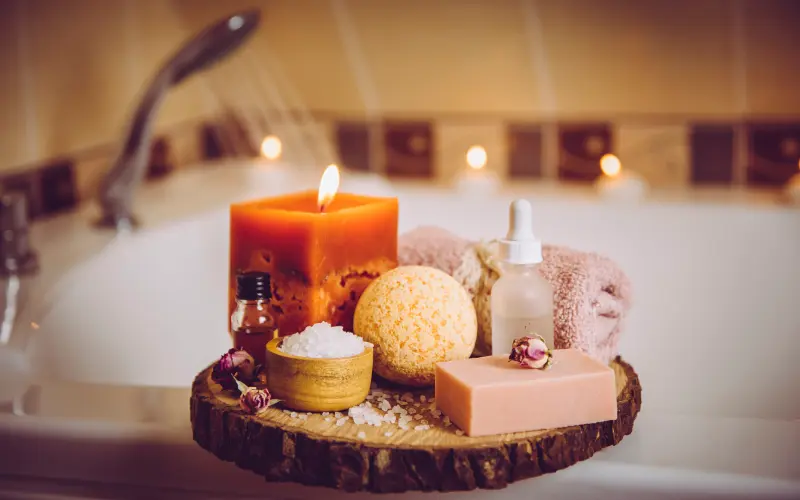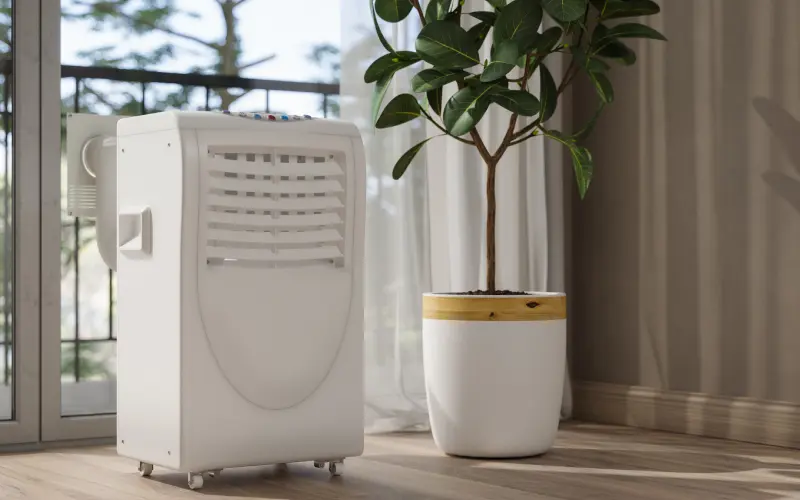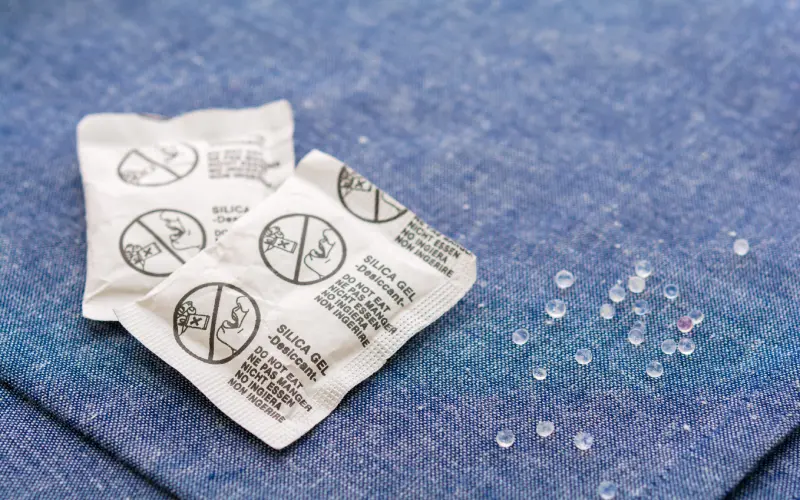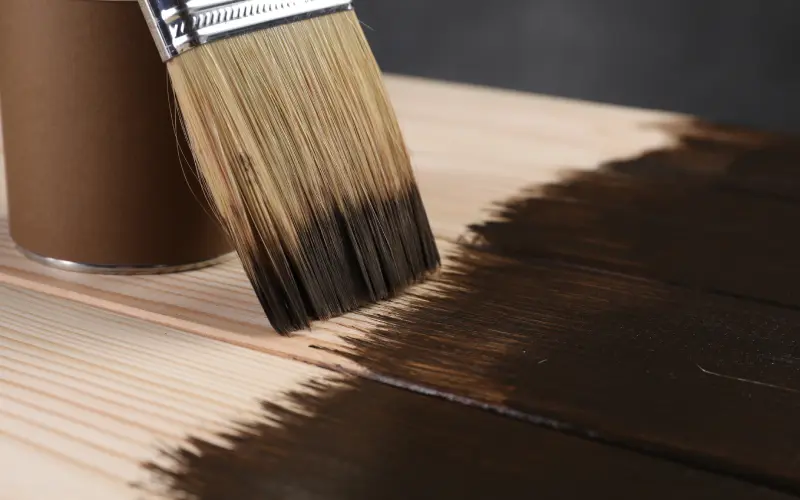Table of contents:
- முன்னுரை
- Scented Bliss
- Essential oils and scented candles
- Camphor
- Vinegar and sea salt
- Indoor air purifiers
- Adieu To Dampness
- Dehumidifiers
- Maintain rugs/carpets
- Remove the mould
- Monsoon Care For Your Wardrobe & Furniture
- Moisture absorbers
- Camphor
- Neem leaves
- Naphthalene balls
- Rain-Proof Your Furniture
- Waterproof covers
- Apply wax/polish
- Furniture raisers
- Getting The Basics Right
- A Magical Haven During Monsoon
முன்னுரை
The monsoon is here, and we are sure you are all well-prepared in advance with brand-new umbrellas, raincoats, and rainy footwear. While protecting yourself from the heavy downpour is important, it’s equally crucial to ‘monsoon-proof’ your home – keep the musty smell and moistness away and safeguard your wooden furniture and wardrobe from rising moisture levels. Before the rains start in full swing in the coming weeks, here are some easy tips to keep your house fresh, fragrant and dry.
Scented Bliss
One of the most common monsoon maladies is that musty smell that seems to fill the interiors of your home. Here are a few quick remedies for it.

Essential oils and scented candles: The best essential oils for homes include Lavender, Peppermint, Tea Tree, Sandalwood, Eucalyptus, and Grapefruit. You can also choose scented candles in these fragrances. Aside from alleviating unwanted odours, these fragrances are also known for their therapeutic properties.
Camphor: Light a few pieces of camphor and carry them to each room, letting every corner of your home absorb the delightful aroma. While it keeps your house fragrant, it’s also a great way to keep fungal infestation away.
Vinegar and sea salt: White vinegar and sea salt/white salt are natural odour absorbers. Pour some white vinegar into a bowl and keep it in your room; the musty smell will vanish within minutes. Salt has the same effect, too. Place some sea salt/white salt in small cotton/muslin bags in any corner of your room; that will also help get rid of the stale smell.
Indoor air purifiers: This is not only an efficient way to keep the damp smell away but also enhances the overall air quality inside your home. With poor air quality becoming a rising concern in most urban centers, you can use it throughout the year.
Adieu To Dampness
Increased moisture is yet another problem most homes face during the rainy season. There are many easy ways to keep it at bay.

Dehumidifiers: Installing a dehumidifier is the easiest way to get rid of excess moisture. It’s also an effective remedy for moisture-related breathing problems and allergies. If you do not want to buy an electric dehumidifier, opt for natural dehumidifying plants like Golden Pothos, Spider Plant, Peace Lily, Lilac, and Aloe Vera.
Maintain rugs/carpets: Rugs and carpets trap a lot of moisture during the rains. The best way to tackle this problem is by regularly vacuuming them. Try to keep them as dry as possible; avoid walking with wet shoes/feet over it. You can also seek help from professional carpet cleaners to keep them fresh and dry. If you choose to avoid using carpets during the rains, roll it and wrap a muslin cloth or any other breathable fabric around it. Tuck the cloth in from both ends so that the entire carpet is covered. Choose a dry place to store it.
Remove the mould: Windows, doors, and walls become mould-infested during rains. Regularly wipe these areas with a dry cotton cloth. Keep the windows open for some time to enable air circulation. Applying two coats of anti-condensation paint is also a good idea. Ventilation, insulation and moisture reduction are key to prevent mould infestation.
Monsoon Care For Your Wardrobe
During the monsoon season, your wardrobes, kitchen cabinets, and bookshelves deserve special attention to keep them fresh and pristine. And worry not, it’s actually quite easy to keep these away from moisture troubles. Try one of the solutions mentioned below:

Moisture absorbers: Place moisture absorbers like silica gel, bags of salt, activated charcoal sachets, and even chalk sticks inside your wardrobe to keep them dry. This also works for your kitchen cabinets and bookshelves. Regularly keep your wardrobe open, as that facilitates enhanced air circulation.
Neem leaves: Dried leaves of the neem tree are an age-old remedy for removing microbes. They will also keep your clothes crisp and smelling fresh.
Naphthalene balls: Small insects and termites thrive in moist environments. Placing Naphthalene balls in your wardrobe will take care of this problem.
Rain-Proof Your Furniture
If you have wooden furniture in your house, pay some extra attention to it during the monsoon season. It’s very easy to take care of them if you follow these simple tips:

Waterproof covers: Invest in some good-quality waterproof covers made especially for wooden furniture. This will protect them from dampness and potential damage. It’s also important to protect your wooden furniture from direct contact with water. Keep them away from areas where they will get wet – near doors and windows, on open balconies, etc.
Apply wax/polish: Before the rainy season starts, apply a coat of wax/polish over your furniture. This will act as a protective barrier against water and moisture.
Furniture raisers: Lifting your wooden furniture from the floor will prevent moisture on the floor from damaging it. Buy furniture raisers to ensure that your tables, chairs, and beds are not in direct contact with the floor.
Getting The Basics Right
To achieve the goal of a pleasant home in monsoon, getting the basics right is always crucial. So, apart from the above-mentioned steps, here are some basic measures that can go a long way in making your house monsoon-ready.
- To enable maximum sunlight to enter your home, replace heavy curtains with sheer ones.
- Coir mats are the best choice for entrances, as they absorb maximum water from footwear.
- Keep the exhaust fan and the chimney on in the kitchen when cooking and not just when frying.
- Wipe the bathroom floor and wall after taking a shower. Also, keep the exhaust fan on.
- Always dry your clothes in well-ventilated areas to prevent moisture accumulation.
- Fold and store them only after they are completely dry.
- Use breathable garment storage containers which enable air circulation and prevent condensation.

Free Your Home From Monsoon Woes
These are easy-to-do, simple hacks. Make them a routine practice during the monsoon every year and relish the sight of your home transforming into a warm and cosy haven, fresh and fragrant.




